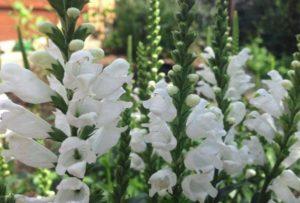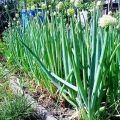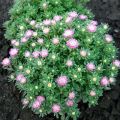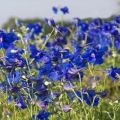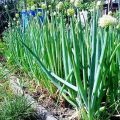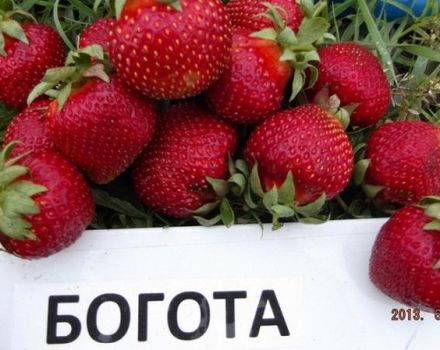Planting and caring for perennial flax in the open field, growing from seeds
In flower beds, you can often find wild and forest flowers. They are able to decorate any local area due to their decorative qualities. Perennial flax looks good in a flower garden, since delicate blue flowers give it a special charm, in order to acquire a garden culture, you need to study the rules of planting and caring for it in the open field.
Botanical description and beneficial properties of flax
Perennial flax belongs to the flax genus and to the Flax family. A herbaceous plant with a vertical root and shoots reaching a height of up to 80 cm. The bushes are decorated with green leaves 5 cm long and 3 mm wide, having a pointed shape and small denticles at the edges.
The flowers of perennial flax 2-3 cm in diameter, which have a white, blue color and are located on straight peduncles, attract attention. They consist of 5 petals, which fall every day and grow overnight, blooming only on sunny days before lunch.
Pleases with flowering from July to August. After that, fruits appear, which are boxes up to 7 mm long, in which small, flattened seeds with an oil bloom are formed.
Blooming flax not only decorates the landscape, but is actively used in medicine, cosmetology, since its seeds have a therapeutic effect and have a rejuvenating and healing effect on the human body:
- increase the body's resistance to the effects of all kinds of viruses and infections;
- improve blood circulation and normalize blood pressure indicators;
- contribute to the rapid digestion of food;
- cleanse blood vessels from cholesterol plaques;
- free the body from toxins, carcinogens and other hazardous substances;
- help to cope with depression and lingering loss of energy.
The plant is also widely used in cooking, it is added as oil in baking and in the manufacture of various dishes.

Application in landscape design
Perennial flax looks beautiful not only in single, but also in group plantings. To create a magnificent composition in the garden, you should plant summer flowering plants next to it. It goes well with crops such as marigolds, cornflowers, chamomile, clover.
The flower is used to decorate flower beds, mixborders, alpine slides, Moorish lawns, as a container culture in sunny corners of the garden.
What is needed to grow a plant
Gardeners plan to decorate their house territory or summer cottage with cold-resistant and rapidly blooming crops with garden flowers. But not everyone has the ability and desire to grow flower seedlings for a long time. Perennial flax can be successfully grown by sowing seeds directly into open soil. In this case, the plants will bloom for the next season. To enjoy earlier flowering, you can sow before winter.
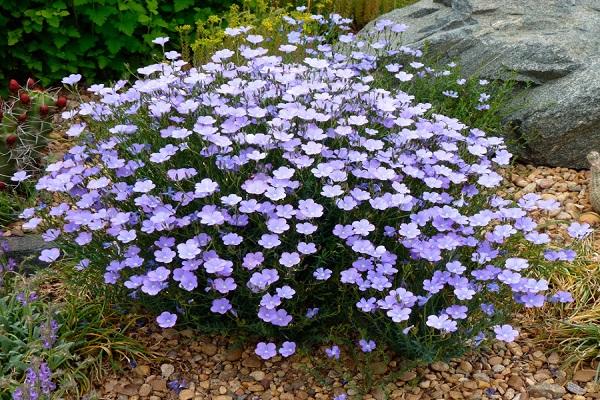
After 4 years, flax needs to be rejuvenated, since its decorative qualities deteriorate with age..
Therefore, for cultivation, you will need high-quality planting material, when choosing which you need to take into account the following parameters: the seeds should have a shiny surface and a yellow-brown color, be heavy, oblong in appearance, with sharp ends.
Determining the variety
Of all the species diversity, when creating landscape design, gardeners prefer the following varieties.
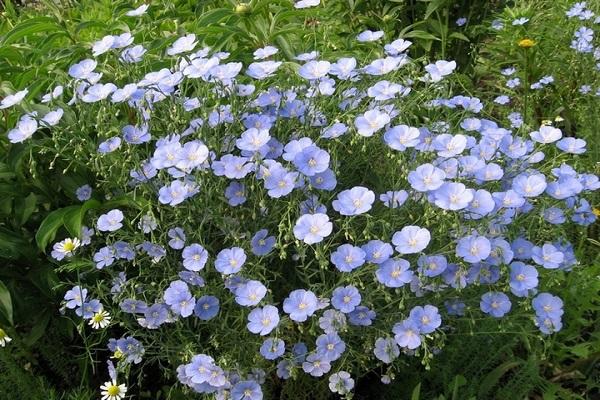
Decorative
A perennial ornamental plant 50-60 cm in height has thin shoots, woody by autumn, and flowers 5-6 cm in diameter, painted in blue, blue.
Under favorable climatic conditions, flowering lasts from May to October.
Large-flowered
Flax of this species grows 40-60 cm in height. The stems are thin, branchy, decorated with narrow leaves. The plant has beautiful flowers 5-6 cm in diameter. The color palette is varied. The species has earned its popularity due to the white, pink, lilac, purple shades of flowers.
It pleases with its flowering from the first days of June to September.
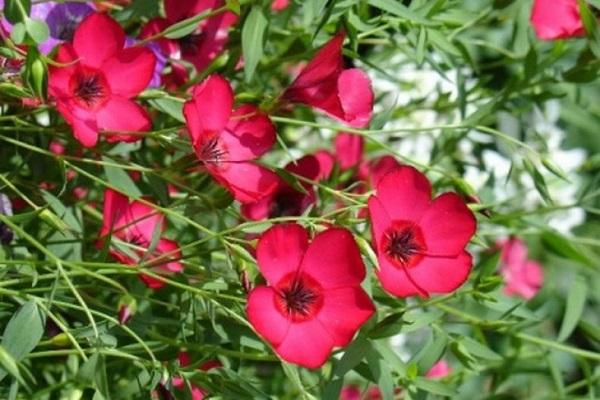
Ordinary
A tall, branchy plant with a height of 40-60 cm. The bush is decorated with five-petal blue flowers, the diameter of which is 3-4 cm. The perennial of this species is resistant to frost and drought, grows well under the sun.
Blooms throughout the summer.
Perennial flax
The plant grows up to 50 cm. Its stems are covered with small alternate leaves. Small-sized flowers of a delicate blue shade with a diameter of up to 2 cm attract attention.
Blooms in June-July.
Perennial Heavenly
When blooming, this flower is compared to the sky blue. The plant has small blue flowers that cover the lignified shoots. A compact shrub reaching 50 cm in height.

Red
The bright bush, which is up to 45-50 cm high and 15-20 cm wide, has gained popularity thanks to its narrow light green leaves and large saucer-shaped flowers with 5 petals. The main feature of this species is that the flowers are predominantly bright red. They are located at the top of the stem and are collected in a graceful inflorescence, the diameter of which is no more than 3 cm.
Violent flowering begins in early spring and lasts until October.
Outdoor planting
The culture does not differ in increased demands on growing conditions, but the further development and comfort of flower growth depends on the correct planting.
Seat selection
Perennial flax is unpretentious in terms of growth and care, but heavy soil and lack of solar heat will negatively affect the abundance and duration of flowering. Therefore, when choosing a site, you should give preference to the most illuminated place, protected from drafts. It is important to avoid planting crops in wetlands.
If groundwater is near the surface, drainage is needed to increase soil permeability and remove excess water.

The soil should be loose and nutritious.Loamy soil with increased thermal conductivity, water permeability, and natural ventilation is considered ideal for perennial flax..
Seed preparation
One of the important stages in the cultivation of perennial flax is the preparation of seeds for sowing. Since the full growth and development of culture and its abundant flowering directly depends on the quality of the seed. Therefore, before planting, for the prevention of various diseases, the seeds must be treated with fungicides.
Terms and technology of planting works
Favorable time for sowing is April, May. It is important that the soil warms up to a temperature of 10 degrees. Perennial flax can be planted in the fall before the onset of the first frost, while the average daily temperature should be at least 20 degrees.
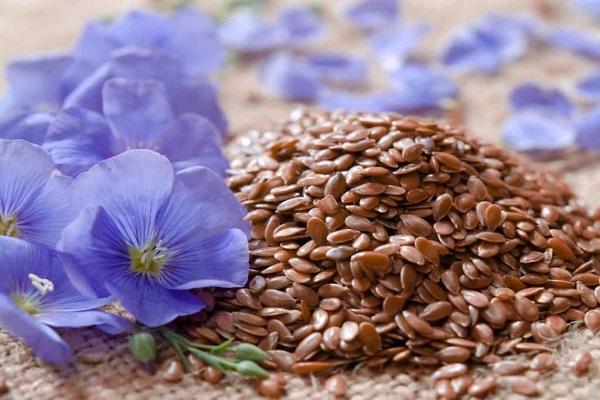
Sowing is not recommended in rainy, wet weather.
The planting technology includes the distribution of seeds over the surface at a distance of 20-25 cm. Then they must be sprinkled on top with a thin layer of soil and moistened with a spray bottle. Seedlings will appear after 2 weeks.
How to sow flax in containers
Perennial flax seeds can be planted not only in open soil, but also in containers, but not for the purpose of growing seedlings, since this method is not effective. In this case, the container will be a permanent place for the development of perennial flax. And under favorable weather conditions, it can be taken outside, placing it in a well-sunlit area.
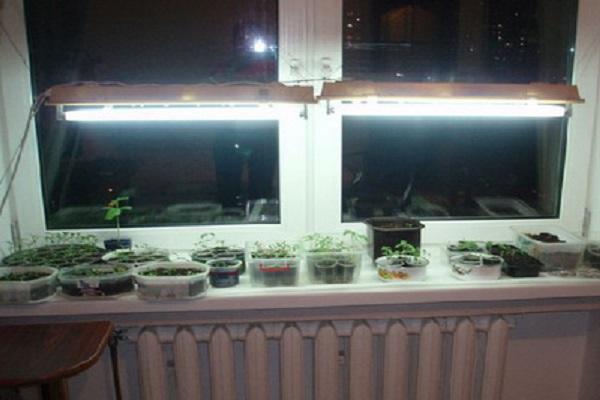
Culture care
When growing, you need to create all the conditions for perennial flax for normal growth and abundant flowering, provide full care and care, and then the results will exceed all expectations.
Watering
Perennial flax requires constant and moderate watering, the soil should be moist all the time. It is recommended to water the flowers with rainwater, and it is better to do this in the morning, so that they have time to dry out in the evening, shrubs that remain wet at night are exposed to fungal diseases. The frequency of irrigation depends on the climate, in general the plant should be watered twice a week.
Weeding
Ornamental plants in a flower bed require regular weeding, which helps the gardener get rid of various weeds. This will create a beautiful and healthy look for plantings and protect perennial flax shrubs from possible diseases and pest attacks.
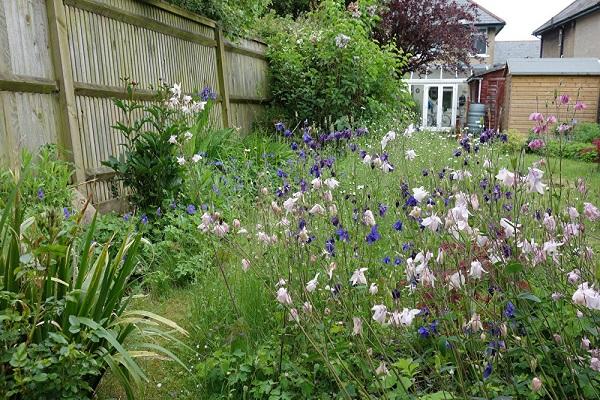
Fertilizers
It is necessary to feed the culture 3 times per season: when planting, at the time of intensive growth and just before flowering. To do this, apply complex mineral and organic fertilizers. You can use special mixtures for flowering decorative species.
Do I need to cover for the winter
Perennial flax does not need shelter for the winter. But gardeners for better wintering recommend covering the plant with spruce branches or fallen leaves.
Diseases and pests of flax: control and prevention
Perennial flax demonstrates disease resistance. Unless only flax midges can choose him.
Folk remedies cannot solve this problem, therefore, it is recommended that in the event of an insidious insect invasion, promptly process the flower bed using special chemicals.
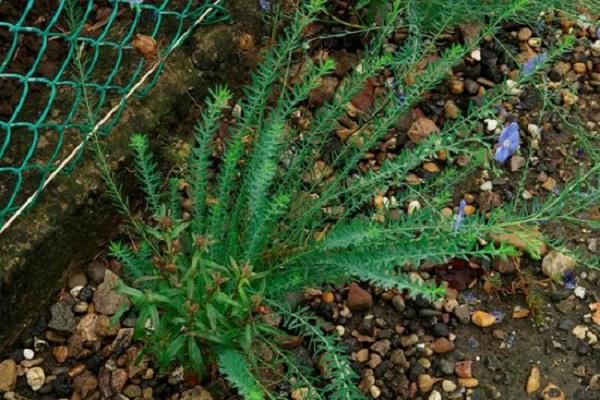
How the plant reproduces
Perennial flax can be diluted using one of the following methods:
- dividing the bush;
- cuttings;
- seeds.
The most common method of propagation is by seed, since the plants obtained in this way grow strong and bloom more abundantly.
By dividing the bush
When choosing this method of reproduction, it is necessary in April or in August after the flax has faded, divide the bushes into parts, which are immediately planted in open ground, keeping a distance of 20 cm between them.In order for the plants to adapt faster and better take root, it is necessary to systematically water and protect from direct sunlight.
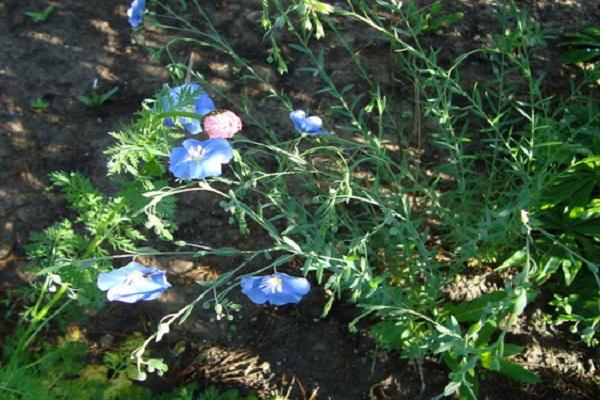
Cuttings
This method of breeding perennial flax can be carried out from April to August. To do this, choose powerful shoots, the length of which should be at least 20 cm, separate them from the bush and dig into the ground at the level of the lower leaves. Shorten the upper part a little, put on a glass cap on top. Cuttings will fully take root in the fall or with the onset of spring.
Seeds
Seed propagation can be carried out both in spring and autumn. To do this, sprinkle perennial flax seeds, observing a distance between planting units of 5 cm. An alternative solution would be sowing randomly, which will make plantings differing in density and density. Since flax has 100% germination, it is not recommended to thicken crops. Young shoots of the plant are characterized by sensitivity and fragility and suffer from cold, wind, so you should take care of the shelter, and in case of weather whims, protect the planting.

Perennial flax is considered a good option for garden fauna, if the priority is winter hardiness, unpretentious care, disease and pest resistance. In addition, the culture will bring brightness to any compositional solutions and will delight you with luxurious flowering throughout the summer season.
